Risk Predictor
PROBLEM
There is a trend among people not to get COVID-19 vaccinations.Society is doubtful of getting COVID-19 vaccines due to spreading opinions, various myths, and fear of getting side effects. However, there is no research being done into the vaccination's side effects or the causes of illnesses and deaths.

This project will look into the specific criteria or risks that come with vaccinations.
OUR OBJECTIVE
To derive and validate risk prediction algorithms to estimate the risk of covid-19 related to side effects after the vaccination of people By, Creating a comprehensive data set with data mining and other techniques Investigating the effects of Demographic Factors, Health Conditions, Genetical influences, and Habitual influences for risks associated with mass corona vaccination. Developing an Interactive Web site with all the data, statistics, analytics, and visualization. So, this will help people to get an idea to check whether to take the vaccines or not.

SOLUTION ARCHITECTURE

To predict the risks associated with mass corona vaccination
we are going to analyze different kinds of side effects
(Fever,Itching,Coughing,Joint pain,Headache,Muscle pain,Swelling , Redness etc)
with the following parameters,
- Age
- Gender
- Height and Weight
- Vaccine Type
- Blood Group
- Living Area
Use case diagram
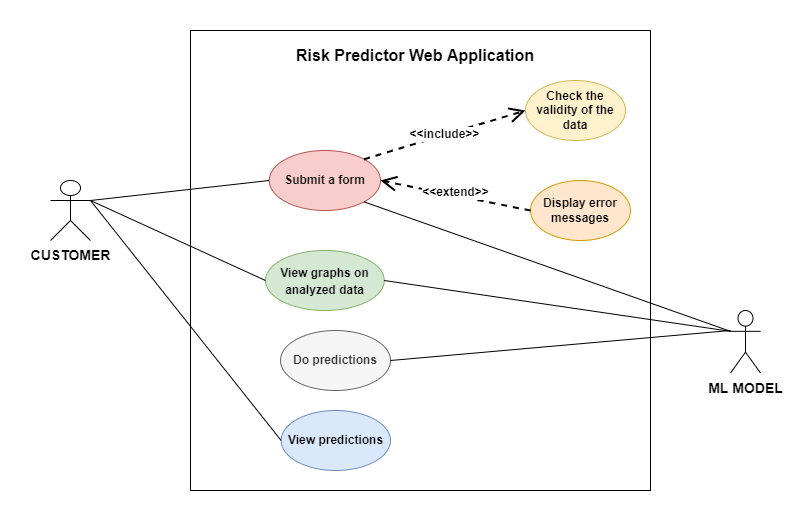
In our system (web application) there are two main actors. The person who visits our website (CUSTOMER) is the primary actor. The machine learning model is the secondary user of our system. There are four main use cases in our system and they are shown below
- submit a form : The user has to submit a form and that form will take some details of the user. Once the user clicks on the submit button the web application will check the validity of the entered data, so it is an 'include' relationship. If the details are incorrect the web application will display an error message, so that is an 'extend' relationship. Finally the data entered by the user will be fed into a ML model to do predictions.
- view graphs on analyzed data : Once the user clicks on the submit button he or she will be navigated to another page and it will show the graphs on analyzed data
- do predictions : ML model will predict the percentage of having a particular side effect for a person, according to the prediction algorithm, past data set and the details entered by the user.
- view predictions : The user will be able to see the percentage of being affected with a particular side effect.
ER diagram
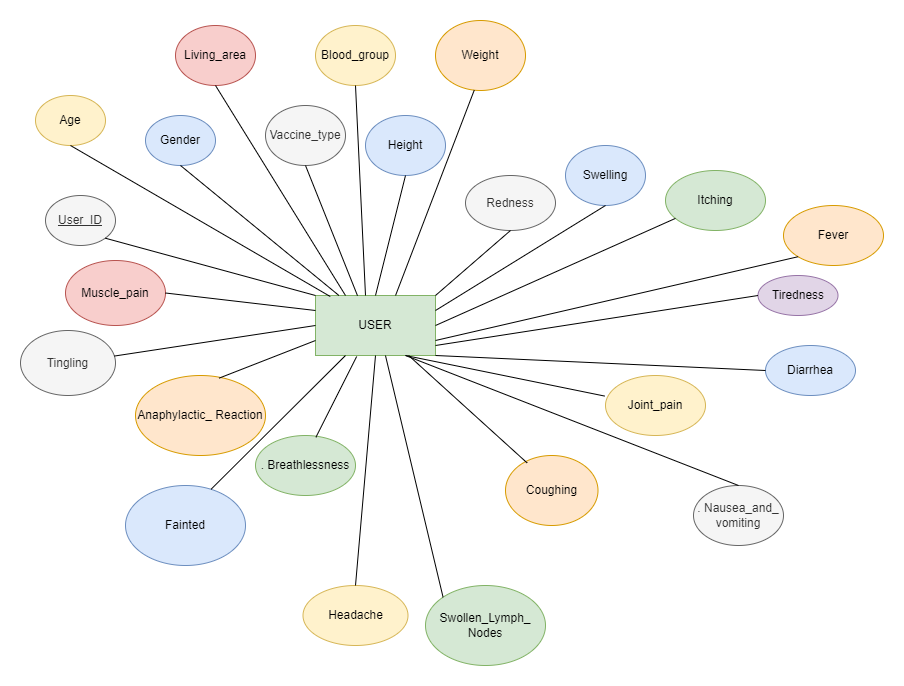
SOFTWARE DESIGN
Our web application consists of 6 main pages.Those pages are shown bellow with their functionality.
- Welcome Page : This is the very first interface that the user can see.
- About page : By going to this page the user will be able to get a clear idea about our web application.
- Form page : when the user clicks on the 'click here to continue' button he or she will be navigated to this page and it will get some essential details from the user.
- Overall analysis page :when the user clicks on the 'view Overall analysis' button he or she will be navigated to this page and it will show the graphical representation of analyzed data based on the already available data.
- Dashboard : once the user clicks on the 'submit' button of the 'Form' page,he or she will be navigated to this page and it will show the prediction that are done by the machine learning model.
- Contact Us: This page consists of the contact details of the members of our team.
UI Designs
Welcome Page
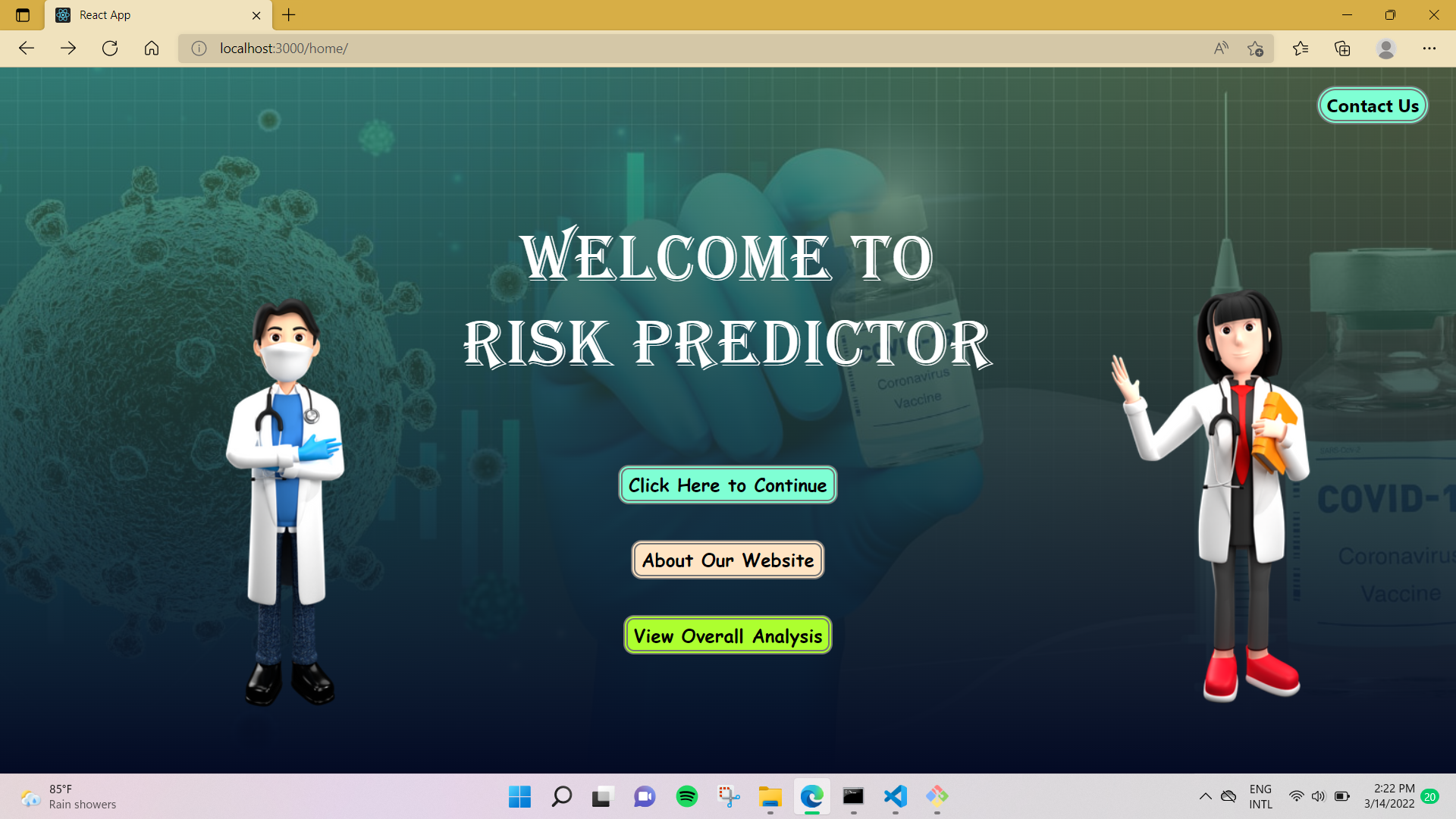
|
Content of the 'About Page'
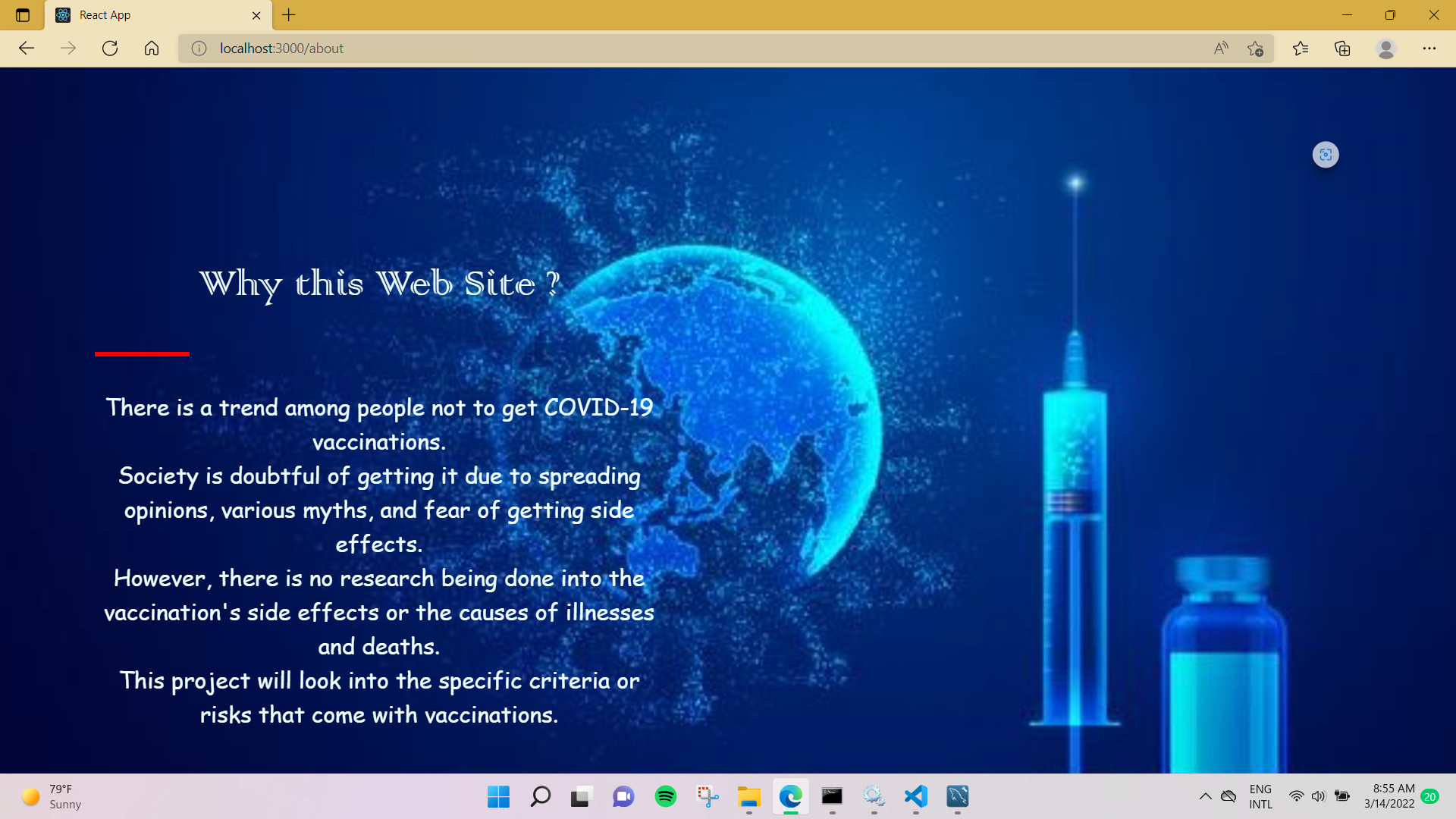
|
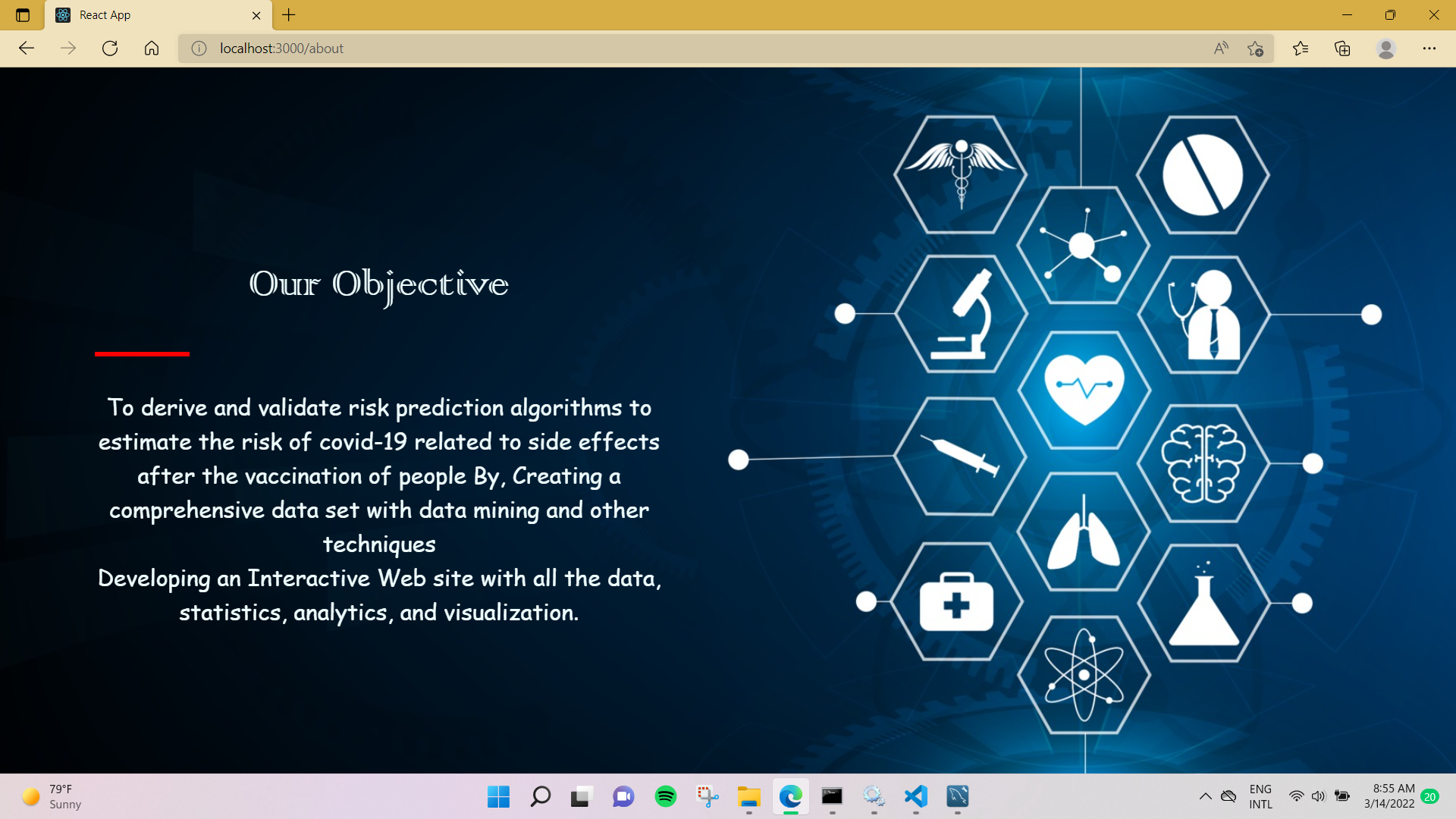
|

|

|
Form page
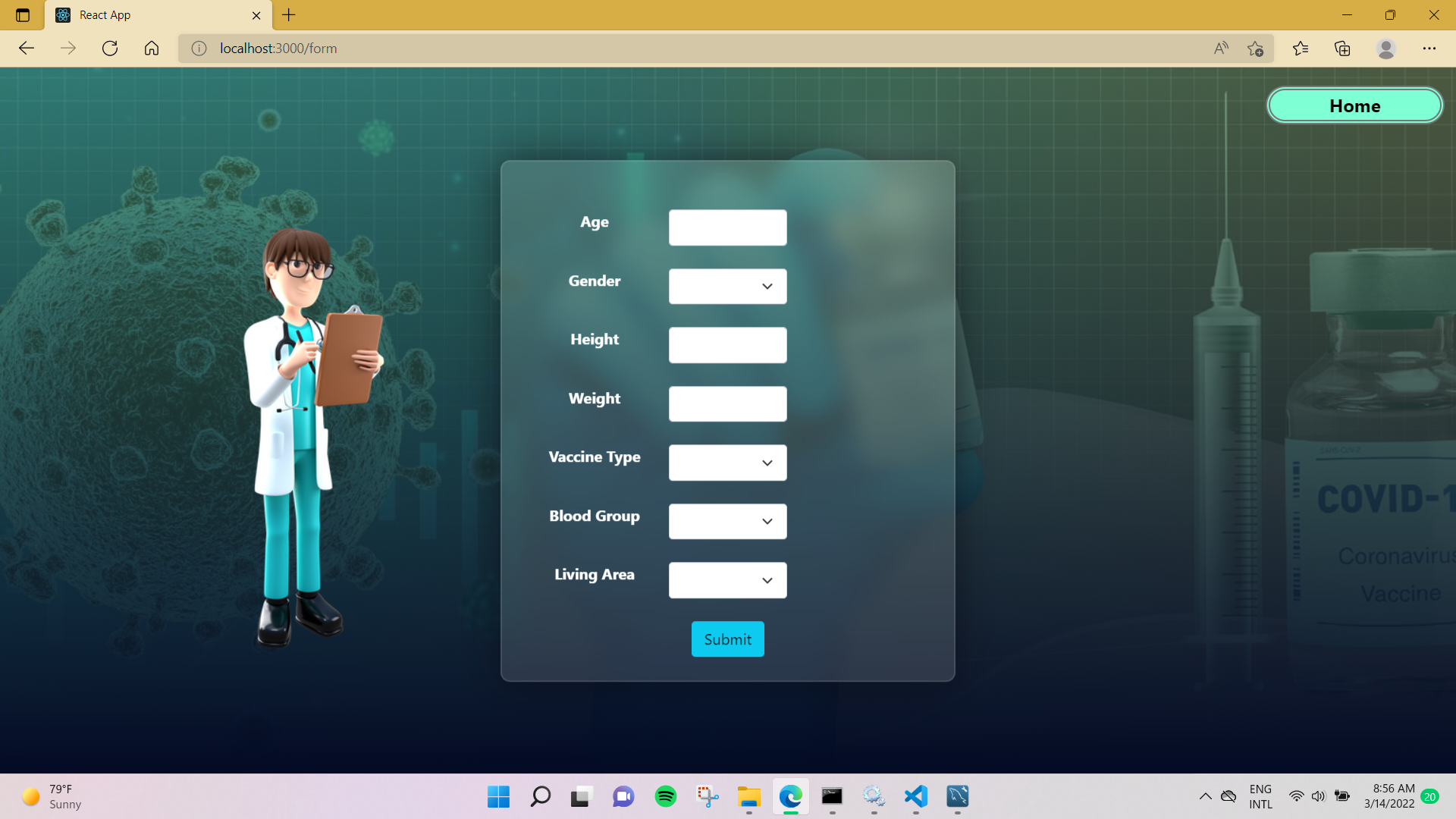
|

|
Contact Us Page
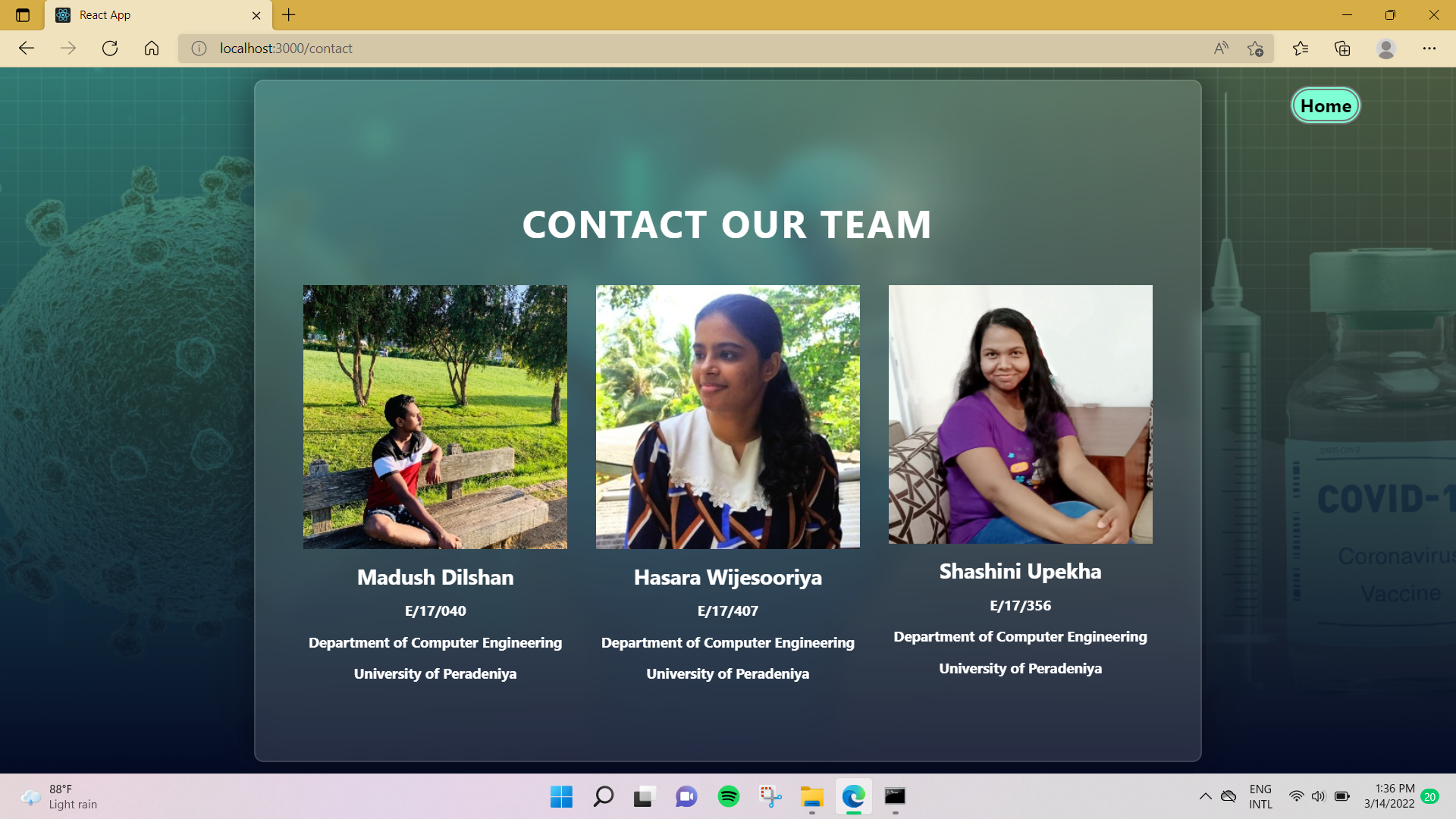
|
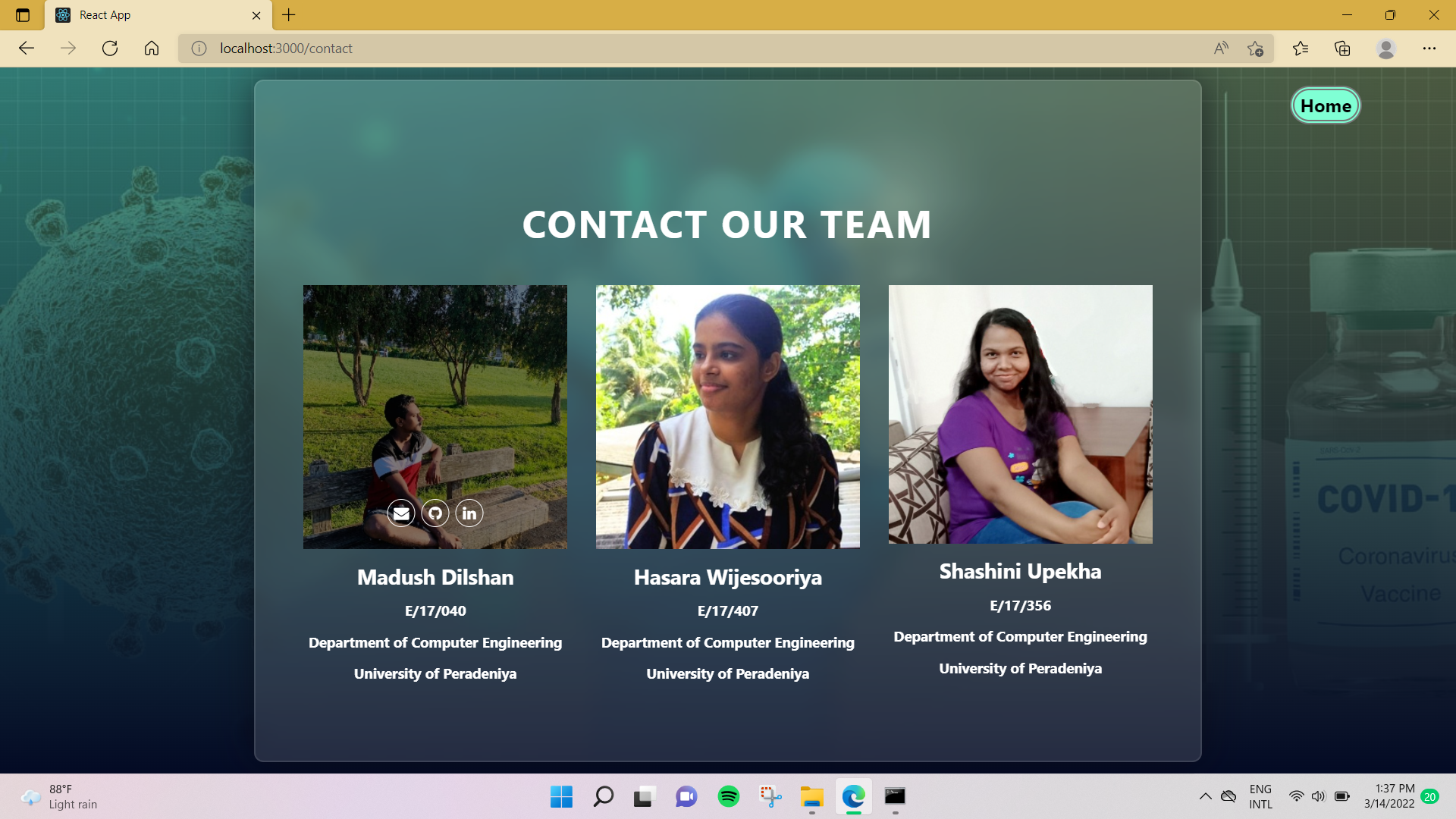
|
Front End Validation
All the user inputs that are taken from the form, are checked before sending them to the server.
Valid inputs
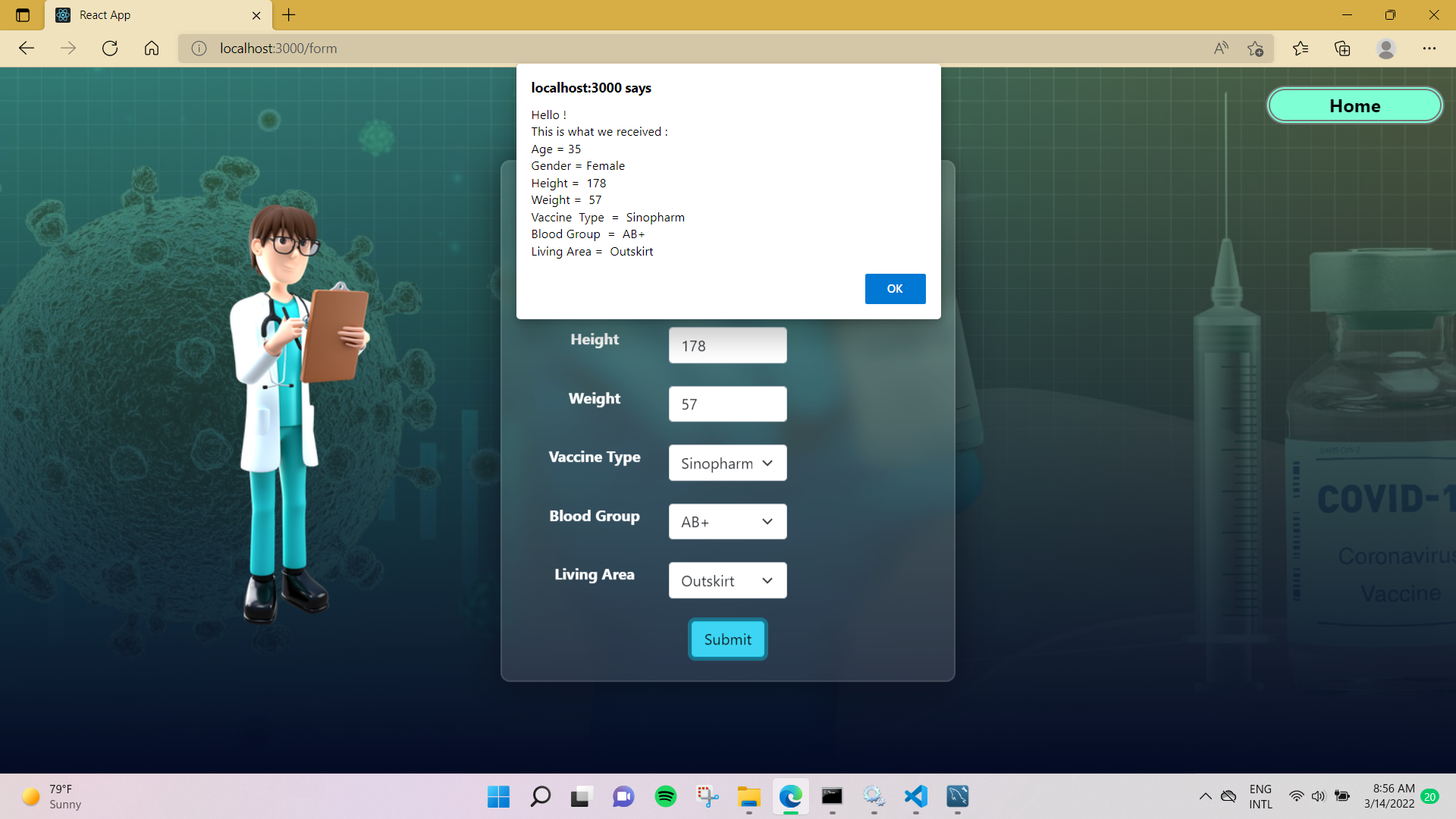
|
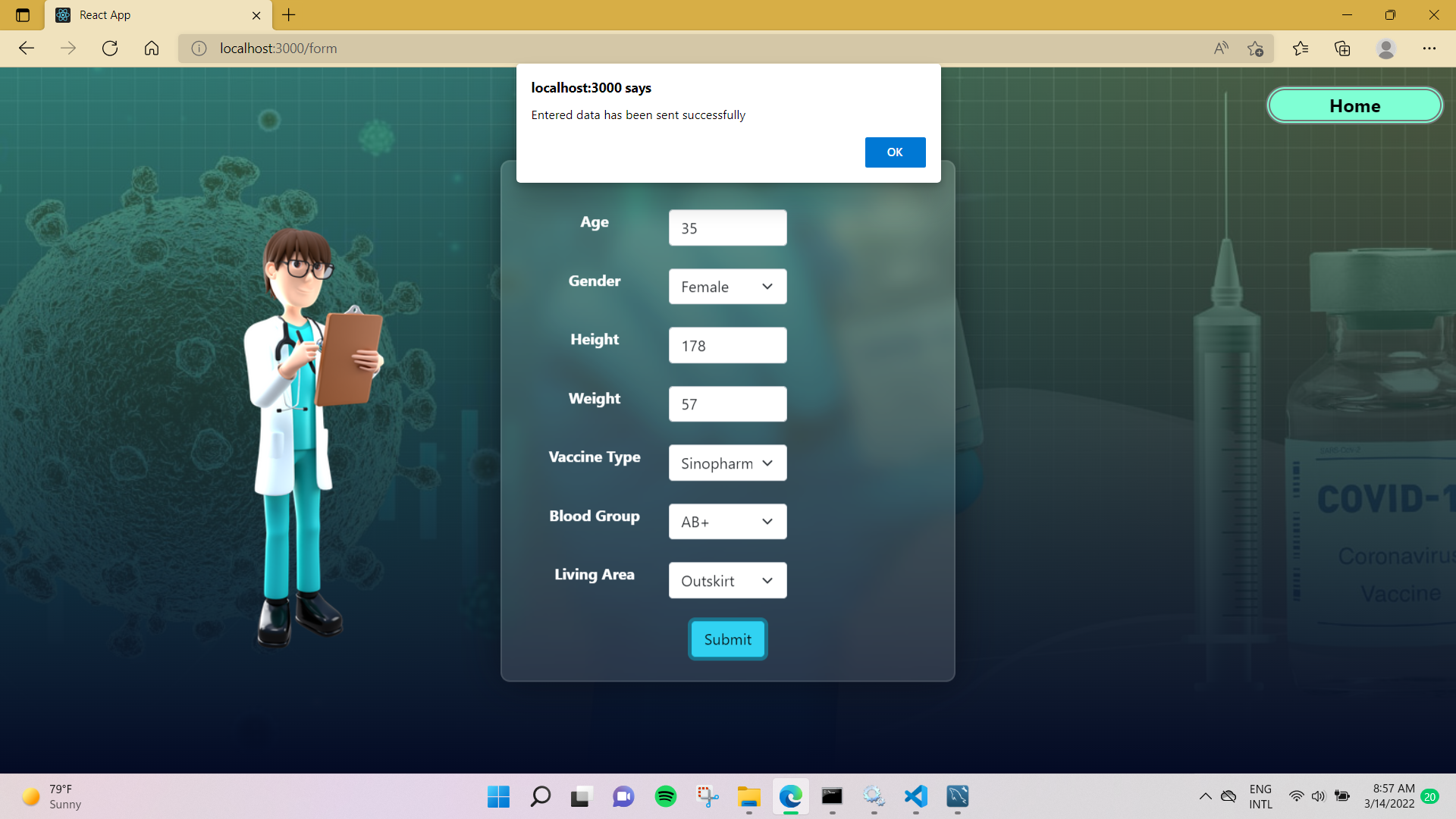
|
Invalid inputs

|
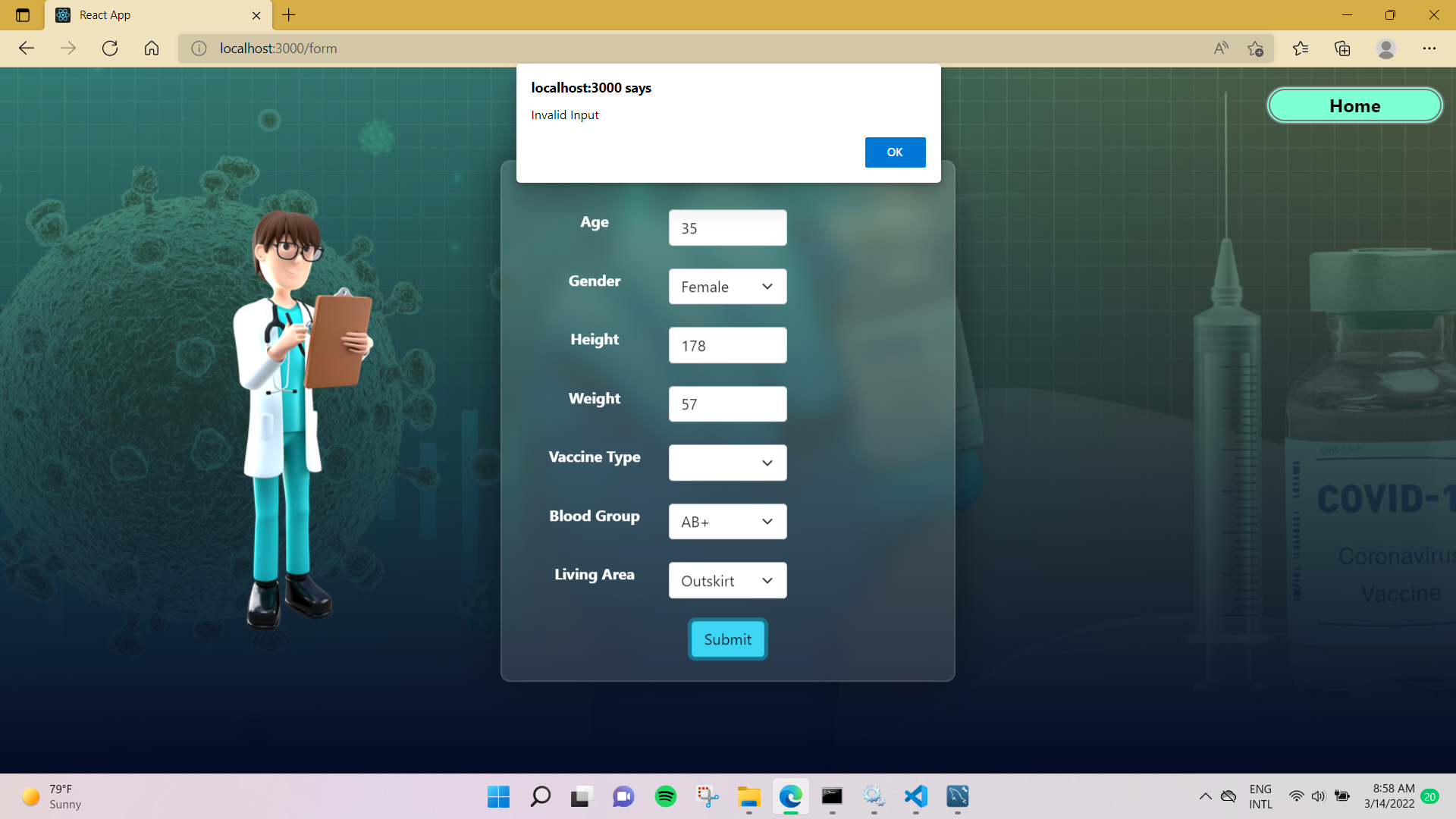
|
Web App Demostration (To be updated .....)
Technologies used

MACHINE LEARNING DESIGN
This study aims to predict the occuring of side effects after the COVID-19 vaccine.
Work Flow
In this study, Four supervised machine learning models will be used to train the dataset and predict the output by using testing dataset:
Logistic Regression
Random forest
Support vector machine
K-nearest neighbor
Progress Review...
DataSet
Data Preprocessing
Train Test split
Linear Regression Model
TESTING
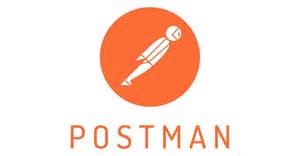
|

|
API testing with POSTMAN
TIMELINE

Contact Us

University of Peradeniya.
Phone: +94 81 239 33 00 |

Faculty of Engineering.
Phone: +94 81 239 33 02 |

Computer Engineering Department.
Phone: +94 81 239 39 14 |




